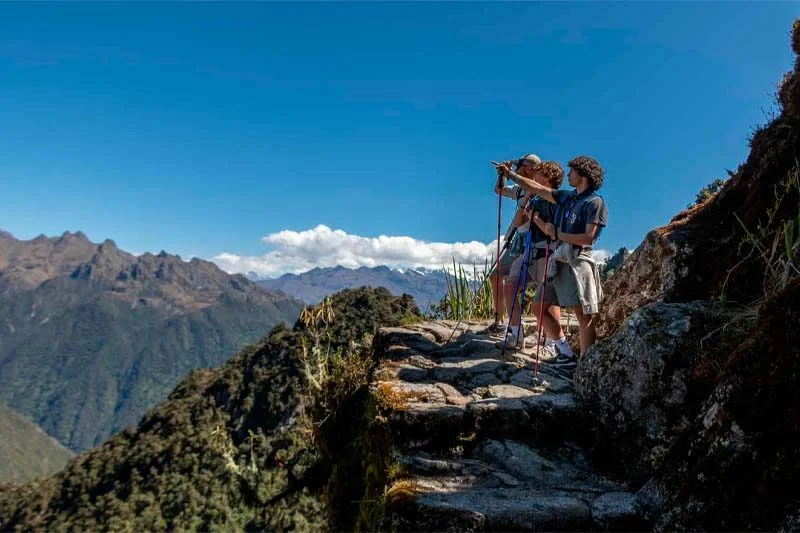The Inca Trail is more than just a hike—it’s a once-in-a-lifetime pilgrimage through the heart of the ancient Incan Empire. Traversing high mountain passes, lush forests, and ancient ruins, this trail ends at the ultimate destination: Machu Picchu, the crown jewel of Inca civilization. If you’re thinking about hiking the Inca Trail in 2025, here’s why it should top your adventure list.
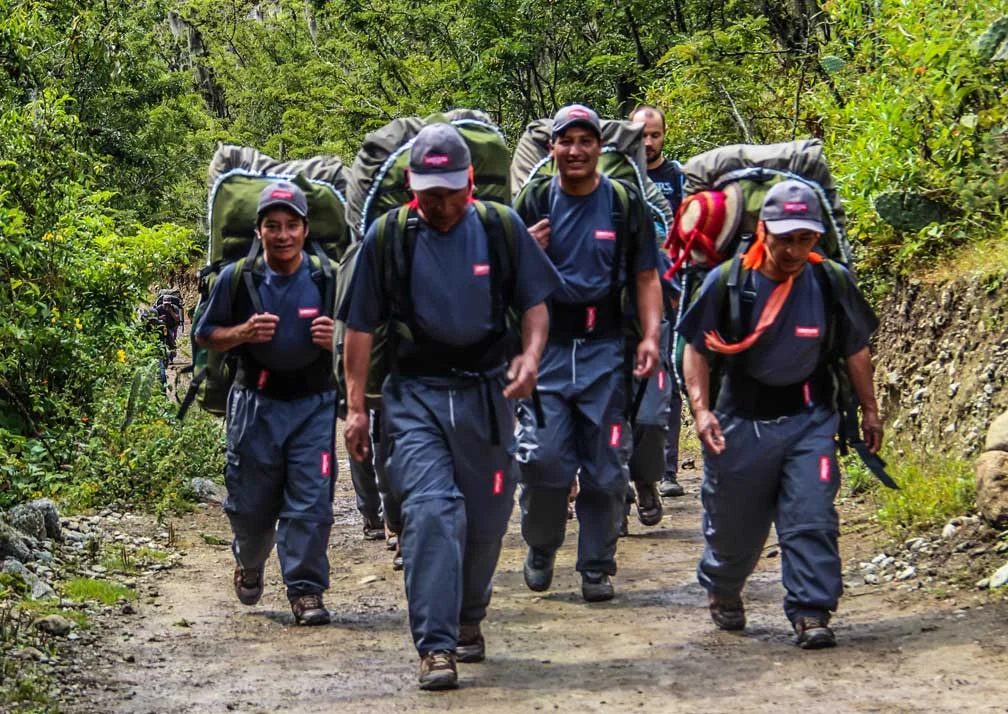
1. A Unique and Rare Experience
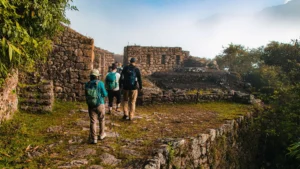
Did you know the Inca Trail is one of the only treks in the world that leads directly to a UNESCO World Heritage Site? But it’s more than that—it’s an ancient path that few travelers get to walk each year due to strict permit regulations. Hiking the Inca Trail is like stepping back in time, following the exact route that the Incas themselves walked over 500 years ago.
Because the number of hikers allowed on the trail each day is limited to preserve this sacred route, it remains a rare experience that only a select few travelers achieve. By securing your spot in 2025, you join a small group of adventurers who have been privileged to complete this historic journey.
2. The Mystical Energy of the Trail
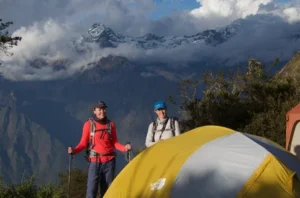
The Inca Trail is not just famous for its beauty and history—many hikers and locals alike speak of the spiritual energy that pulses through the trail. Known to the indigenous people as a “qhapacñan,” or sacred road, this path was designed with great care by the Incas to align with natural landscapes and celestial bodies.
At certain points along the trail, such as Dead Woman’s Pass and Intipata, hikers report feeling a deep connection with the earth and sky, a sensation that is difficult to describe but unforgettable for those who experience it. The trail is often seen as a path of transformation, making it a powerful pilgrimage for those seeking not only physical adventure but also spiritual renewal.
3. The Challenge: Conquering the Trail’s Highest Pass
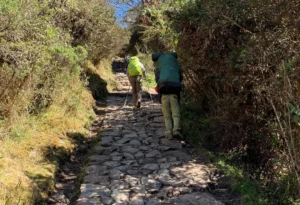
One of the most physically demanding aspects of the Inca Trail is the ascent to Dead Woman’s Pass (Warmiwañusqa), standing at 4,200 meters (13,800 feet) above sea level. This is the highest point of the trek and one of the greatest challenges you’ll face.
Though it’s a difficult climb, the view from the top is nothing short of spectacular. The sense of achievement once you reach the summit is unparalleled, with sweeping vistas of the surrounding mountains and valleys. You’ll feel as though you’ve conquered the world, having conquered this formidable pass.
Interestingly, the name Dead Woman’s Pass comes from the shape of the surrounding mountain ridges, which resemble a woman lying on her back, not from any macabre legend. It’s a unique story that adds to the mystical allure of this famous spot.
4. Hidden Treasures Along the Trail: The Inca Ruins You Won’t Find Anywhere Else

While Machu Picchu is the ultimate destination, the Inca Trail is dotted with hidden archaeological sites that are inaccessible to non-hikers, making your journey even more exclusive. These ruins remain in their natural, remote settings, undisturbed by mass tourism. Each site offers a unique glimpse into the life and culture of the Inca Empire.
- Wiñay Wayna: Often considered the most beautiful ruin on the trail, Wiñay Wayna means “Forever Young” in Quechua. It’s a terraced agricultural complex nestled into a steep mountainside, with cascading waterfalls nearby. Many believe it served as a final resting stop for pilgrims before reaching Machu Picchu, where they performed spiritual rituals to prepare for the sacred city.
- Runkurakay: This circular stone structure is perched high on a hill and was likely a tambo, or Incan rest station. Its strategic location offered shelter to travelers, and some historians believe it was also used for religious ceremonies.
- Phuyupatamarca: Meaning “Town in the Clouds,” Phuyupatamarca is often shrouded in mist, giving it an ethereal quality. Its elaborate system of agricultural terraces and ceremonial baths is a testament to the Incas’ advanced engineering. The ceremonial baths are said to have been used for purification rituals before entering Machu Picchu.
These lesser-known ruins are part of the unique reward of the Inca Trail, giving you a deep connection to the past long before you reach the grandeur of Machu Picchu itself.
5. Encounter Rare Wildlife and Plants Found Only in the Andes

The Inca Trail traverses multiple ecosystems, each home to a wealth of rare flora and fauna. As you trek, you’ll have the opportunity to see:
- Orchids and exotic plants: The cloud forest section of the trail is home to over 400 species of orchids, some of which bloom only at certain times of the year. You may also come across species of bromeliads, ferns, and other tropical flowers, painting the trail with vibrant colors.
- Andean condors: If you’re lucky, you might spot the majestic Andean condor, one of the largest flying birds in the world. These massive birds are symbols of freedom in Andean mythology and soar high above the valleys, offering a breathtaking sight.
- Spectacled bears: Known locally as the “Ukuku”, these rare bears are the only bear species native to South America. Though sightings are rare, they are sometimes seen foraging in the lush, green valleys.
The variety of ecosystems and wildlife makes the Inca Trail not only a historical trek but also an incredible nature experience.
6. A Rare Chance for Stargazing on the Trail

One of the lesser-known perks of hiking the Inca Trail is the opportunity for stargazing at high altitude. Far from city lights and pollution, the night sky over the Andes is spectacularly clear. You’ll be able to see countless stars, constellations, and even the Milky Way stretching across the sky.
Interestingly, the Incas themselves were expert astronomers, and many of their buildings and structures were aligned with the stars. Some believe that certain sections of the Inca Trail were used as astronomical observatories, allowing priests and astronomers to track the movements of the stars and planets.
Spending a night beneath the Andean sky is a mystical experience, deepening your connection with the land and the ancient culture that once thrived here.
Why You Should Book Your 2025 Inca Trail Experience with Us
Kada Travel as a new travel agency specializing in authentic, guided treks, we are passionate about delivering exceptional service and unforgettable experiences on the Inca Trail. Here’s why booking with us ensures your 2025 trek will be the adventure of a lifetime:
- Authentic, Local Expertise: Our guides are not just experts in Inca history—they are locals who have grown up in the region and are intimately familiar with the trail’s hidden gems. Their knowledge and passion for the land will enrich your journey, giving you a deeper appreciation of every step.
- Exclusive Small Group Tours: Unlike larger operators, we focus on small group tours, which means more personalized attention, less crowded campsites, and a more intimate connection with the landscape.
- Top-tier Equipment and Support: We provide high-quality camping equipment, nutritious meals, and a team of dedicated porters to ensure your trek is as comfortable as possible. Our support staff ensures you can focus entirely on the experience, without worrying about logistics.
- Eco-conscious and Community-driven: As a new agency, we are committed to responsible tourism. We work closely with local communities, employ local porters with fair wages, and support sustainable practices on the trail.
- Early-Bird 2025 Discounts: Secure your place on the Inca Trail for 2025 with our early-bird offers. By booking early, you not only guarantee your spot on this iconic trek but also benefit from special pricing exclusive to our first 2025 customers.
Conclusion:
The Inca Trail Is Waiting for You in 2025
The Inca Trail offers more than just a physical challenge—it’s a profound journey through history, culture, and nature. Whether you’re in it for the adventure, the spiritual experience, or the stunning views, the Inca Trail will leave an imprint on your soul.
With limited permits, high demand, and an unparalleled experience awaiting you, now is the perfect time to start planning your 2025 Inca Trail adventure. Book with Kada Travel today and secure your place on one of the world’s most iconic and transformative treks.



